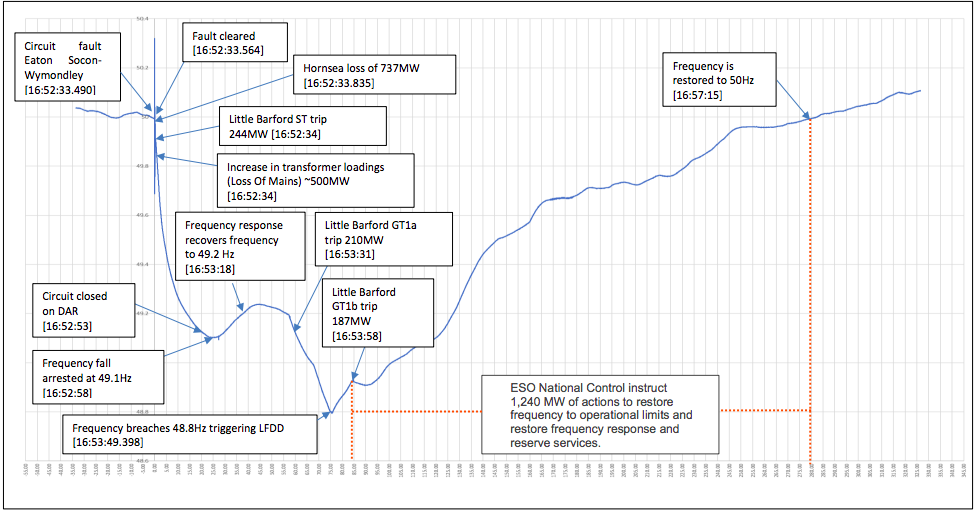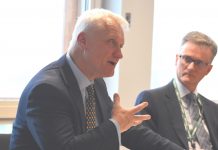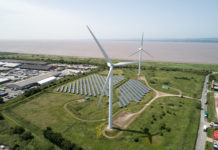Ørsted, RWE and all of the distribution network operators are to be investigated alongside National Grid Transmission and Electricity System Operator (ESO) over the 9 August blackout.
The ESO’s interim report cites a lightning strike as triggering the chain of events that led to widespread disconnection on the distribution network. However, the report acknowledges that lightening strikes happen all the time.
It also lays out a timeline. While REMIT data, which is delayed, shows Little Barford reporting offline first followed by Hornsea, National Grid’s timeline suggests Hornsea started deloading a fraction of a second earlier, though the report suggests they were parts of the same incident.

While Hornsea’s initial reaction was “as expected”, the reaction to voltage fluctuation expanded though the plant, activating protective safety systems, according to the report. That led to Hornsea deloading from 799MW to 62MW.
Milliseconds later, Little Barford’s steam turbine tripped, taking 244MW off the system.
As frequency response kicked in to manage the initial drop, about 500MW of embedded generation came offline as their loss of mains protection systems activated.
Little Barford’s protection systems then automatically tripped another of its turbines, which caused frequency to breach 48.8Hz – the Low Frequency Demand Disconnection threshold.
At that point the ESO’s systems instructed DNOs to shed 931MW of demand. Little Barford staff then manually shut down another turbine 30 seconds later in response to high steam pressure – but National Grid said the disconnected demand and the additional power it had instructed to come on stream accommodated that loss.
Frequency was back to 50Hz within five minutes – and DNOs instructed to commence demand restoration in under 15 minutes – of the initial failure.
Ofgem’s investigation will focus on whether any party involved breached license conditions or other obligations. If they have, the regulator has the power to impose fines.
It will look at whether National Grid ESO held sufficient inertia and frequency response and whether the generators should have been more robust in reacting to the initial fault.
On demand disconnection, it will look at whether the DNOs made the right decisions in terms of who was prioritised – and who was not.
In the interim report, National Grid ESO said it was holding enough reserve in line with security of supply standards – to cope with a single event.
The ESO also said it is working on a project to determine “how new sources of inertia and other stabilising capabilities can be provided to the system”, as well as new frequency response services.
See the interim report here.
Related stories:
Blackouts: what happened and what are the implications?
National Grid: Two generators cause big frequency drop
Take our DSR and battery storage survey
Reactive Technologies signs deal with ESO to measure inertia
National Grid uses more Stor and frequency response, flags challenges ahead
National Grid and Epex Spot to collaborate on weekly FFR auction
National Grid to trial same day FFR auction
Grid to bring wind and solar into FFR, details balancing system overhaul
Can the Balancing Mechanism offset FFR price erosion?
Grid outlines plans to bring all flex providers into Balancing Mechanism
Grid outlines plans for hundreds of millions worth of services
Grid plots major overhaul of balancing services with frequency response first to change
National Grid mulls rolling all frequency response services into one
Faraday Grid: We come from the future to stabilise the power system
Click here to see if you qualify for a free subscription to the print magazine, or to renew.
Follow us at @EnergystMedia. For regular bulletins, sign up for the free newsletter.



